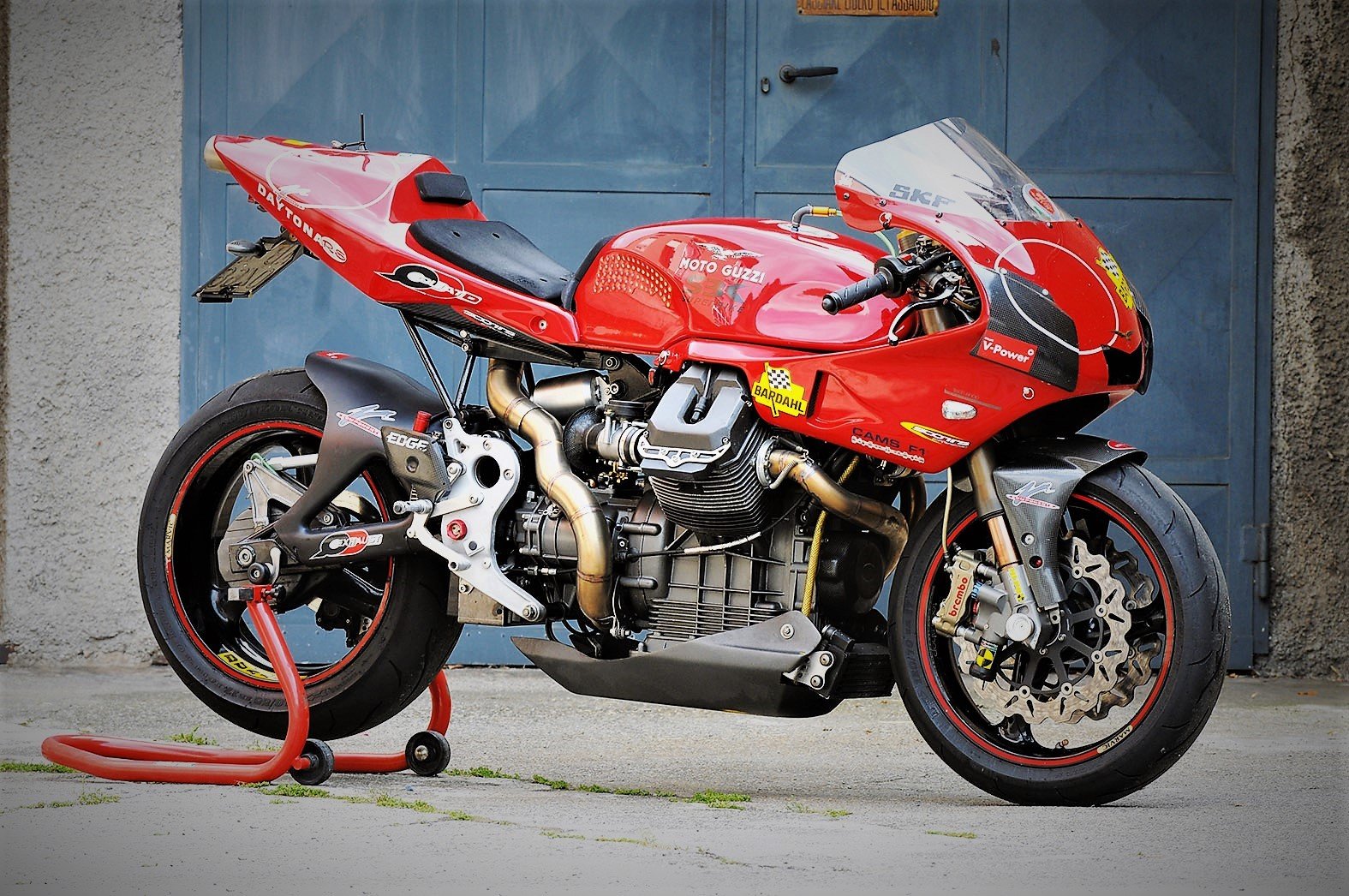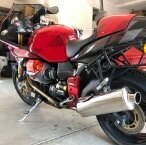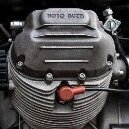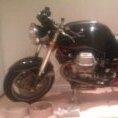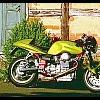-
Posts
5,450 -
Joined
-
Last visited
-
Days Won
276
Lucky Phil last won the day on August 14
Lucky Phil had the most liked content!
Profile Information
-
Location
xxxx
-
My bike(s)
v11 sport,GSXR1000 K7,Ducati1198s, Ducati1000ss,DucatiST2.
Recent Profile Visitors
23,475 profile views
Lucky Phil's Achievements
-
You find now with older machinery that is now supported by the aftermarket because the OEM is no longer available that you can't judge the quality by the retail price. A $200 dollar part you buy in your home country or the western market is still the same $20 item that is made in China for example. The often massive price difference is simply down to retail margins and sales volumes. The ignition pickup is an example. When I went looking for them for the Daytona engine 5 or 6 years ago the commonly available aftermarket ones varied in retail price enormously but were all the same Chinese manufacture. The difference between the direct cost from China and what the retailers were selling them for was massive. So from memory the aftermarket wanted 80 or 90 dollars for them and I bought direct from the Chinese manufacturer for $10 each. I bought 2 and the Chinese one fitted not only looked identical to the OEM original but has worked fine ever since. Things change. Why pay a hefty mark up for the same item from the same manufacturer.
-
On the BMW forum people use everything from the BMW recommended 0W-20 to 5W-30 to 10W-40 if they track their car regularly. The B58 engine has Variable valve systems on inlet and exhaust and ecu controlled oil volume delivery to regulate/adjust oil pressure depending on the conditions. Everything seems to work fine no matter what oil you use. Phil
-
My Ducati 1000ss DS, 1000cc air cooled fuel injected engine with about the same specific output of a Norge, recommended oil 10W-40. My Guzzi 1100 2 valve same as Norge engine basically ran for 10 years on M1 0W-40. Not many road engines are going to "blow up" because of the oil you use or the grade. But when you pull it down for a rebuild it can make the difference between whether or not you have a simple and cost effective re ring and new big end shells and valve guides or the total every wear part needs to be replaced and it's a part out job now expense wise. Then there is giving away performance and fuel economy aspect. Me, I just like to run what I know myself is the best oil for my specific needs and eliminate the corporate "less than ideal but cover all bases" approach no matter how obscure and ridiculous. Phil
-
Ha, that makes a lot of sense! Phil
-
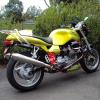
best place to get red valve covers & matte grey frame plates?
Lucky Phil replied to fastaussie's topic in 24/7 V11
Funny. Phil -
Don't worry Pete, even if it does blow up which it won't they won't be smart enough to figure out if it's 20 or 30 weight anyway. Phil
-
Well just because the manufacturer tells you to run a certain grade and sometimes even a particular brand of oil doesn't mean it's the best solution. To start with manufacturers can "align" themselves with oil manufacturers for fiscal reasons and then make their recommendations fit what the oil manufacturers makes at that particular time. There also a whole host of other reasons manufacturers specify a particular oil. So in my BMW powered Supra BMW specify 0W-20 oil. Why? partly because of it's ability to meet emission requirements at the expense of long term engine health. Do I run 0W-20 oil in it? No. I run a 5W-30 oil. BMW also fit the car with a city start/stop system to meet emission specs at the expense of long term engine health. Do I switch that shite off every time I drive the car? You bet your life I do. My previous Focus RS specified a 10W-40 for Australia and a 10W-50 for the USA. Why would you do that for countries with basically the same maximum daily temps in summer and much the same driving conditions. For "other" reasons is why. So manufacturers specify oil for a whole raft of reasons, some of which make sense only to them and also to cover every possible scenario their product will encounter. That's where being educated in the technical stuff and your specific operating needs comes in. If you have some detailed knowledge of engines and oils you can eliminate the political and peripheral rubbish and make an informed choice based on sound knowledge for your application. Add to that the fact that oil specs are changing and evolving all the time and quite rapidly so some bulletin from Guzzi 10 or 12 years ago isn't necessarily worth squat today because oils have evolved a lot in that time. So as an example oils have recently gone from SN+ to SP rated. The SN+ was an interim spec oil to combat DI engines propensity for LSPI failures. It was then replaced by SP which then covered the LSPI issue and in addition gave extra cam chain wear protection so SN+ is now defunct. If you want to run the best oil in your engine then you need to keep up with the oil tech and not outdated requirements from manufacturers that were established for often spurious reason for their benefit not the owners. Remember the engine manufacturer has zero concern for the health of you engine once the warranty period has expired and even less(-0, lol) beyond that. In addition we now have bespoke oils for specific applications from boutique oil suppliers and that adds another dimension to the equation. So the owner has a choice of oil that narrows down to a specific engine configuration and type. These days even brand specific dealers often don't use the oil spec specified by the vehicle manufacturer. It's quite common to look at your billing and see an oil grade other than the vehicle manufacturers requirements. Why? because if the specified oil is something they can't or don't buy "bulk" then they just use whatever they have! I've seen this many times. I'll bet you won't get a 10W-60 in your Guzzi at every Guzzi dealer there is. So Mick I put the manufacturers recommendations on oil in the "for the guidance for the wise and the blind obedience of fools" category. Phil
-
Here's what AI says about M1 oil docc. I always known it as a Group 4 full synth motor oil. It may have changed in the last decade, not sure. Yes, Mobil 1 is a synthetic motor oil that uses Group IV PAO (polyalphaolefin) base stocks, often combined with Group V (ester) base stocks for its tri-synthetic formula, providing high performance and engine protection. While the specific formulation can vary, Mobil 1 is recognized for using these higher-grade base oils to achieve its "fully synthetic" claim. Phil
-
Probably the same logic that Guzzi built engines in those days with flywheels the weight of a V8 car engine or used linked brakes or produced an engine with the easiest valves in the world to adjust and gave it hydraulic lifters or used DLC coated lifters that shat themselves because it was the totally wrong tech for the application. You know, that logic. Phil
-
Because it's bad for catalytic converters. Phil
-
Here's some key points about engine oil. Always use a "full synthetic" oil. The lower the "W" number the better. People that say a "0" weight oil is too thin don't know shit about oil. Try to keep the viscosity spread to 30 units or less if possible. Change it regularly Don't allow your engine to do short runs that don't let the engine oil spend some decent time at operating temp. Zink in a flat tappet engine? 900PPM to 1400 PPM is where you need to be. Too much is not good as is too little. Phil
-

ANSWERED Is my Electrosport Stator Defective?
Lucky Phil replied to Sam P's topic in Technical Topics
I remember that BMW's use the charging indicator light as part of the charging regulation system. If the charge light bulb burns out then you get nothing out of the alternator. Left me stranded on the side of the road in the Isle of Mann in 1984. Not sure if it's applicable to the V11 system though. Phil -

best place to get red valve covers & matte grey frame plates?
Lucky Phil replied to fastaussie's topic in 24/7 V11
He is but he's a "very naughty boy" Phil -

best place to get red valve covers & matte grey frame plates?
Lucky Phil replied to fastaussie's topic in 24/7 V11
No, Merlin and gardens are mutually exclusive. I had a nice garden once and then we got a dog, sigh. Phil -

best place to get red valve covers & matte grey frame plates?
Lucky Phil replied to fastaussie's topic in 24/7 V11
I love an optimist. The bikes been out of production for almost 20 years but you're in luck I have a valve cover tree in my yard and I'll pick you some and send them over, lol. Phil

